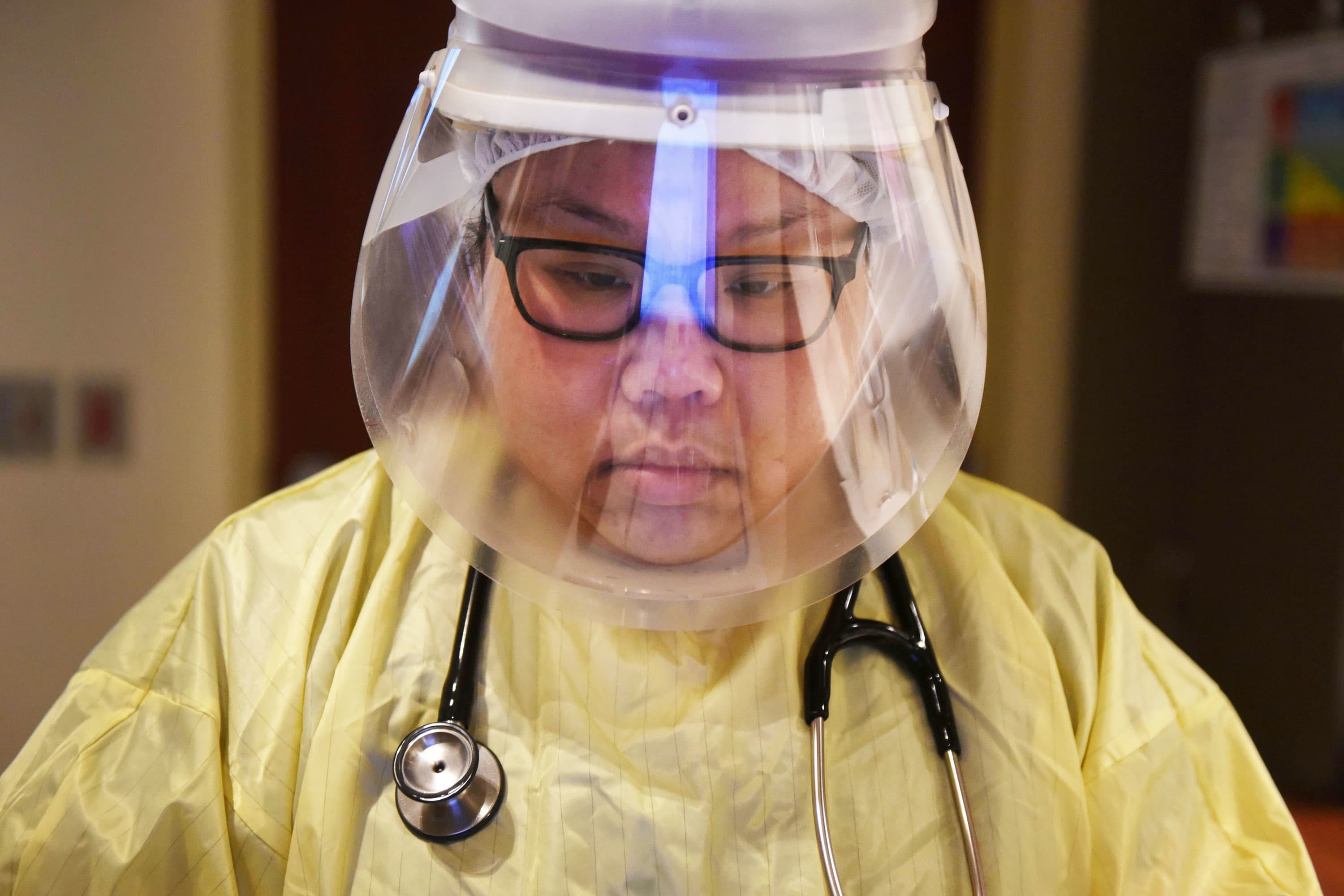Products You May Like
Teresa Nguyen, a respiratory therapist, goes over a patient’s charts inside a room for people with the coronavirus disease (COVID-19) at a hospital in Hutchinson, Kansas, November 20, 2020.
Callaghan O’Hare | Reuters
The U.S. economy will recover faster than expected in part because the sectors most susceptible to the most recent coronavirus spread aren’t taking as severe a hit, according to Goldman Sachs.
Separate analyses the firm has published over the past several days indicate a fairly strong growth path ahead. GDP in 2021 is projected to increase 5.3% compared to a 2020 drop of about 3.5%.
Economists have been worried that the aggressive spread of Covid-19 cases will exact an especially large toll on the battered services industry, but Goldman said data is “so far inconsistent with this view.”
“While many services industries saw large declines in activity in the initial stages of the virus, only the most virus-sensitive sectors have shown meaningful sequential declines in November, with most other industries close to or at their peak levels since the start of the pandemic,” Goldman economist David Choi said in a note.
“While still early, the data so far suggest that very high levels of virus spread may ultimately translate to a surprisingly small hit to overall activity this time around,” he added.
Services make up a huge part of the American economy. While the consumer accounts for about two-thirds of gross domestic product, services account for about 61% of all that spending. However, the level of services expenditures was off about 17% in the third quarter from the same period a year ago.
Despite the overall downturn, the services sector has been on the mend, expanding for six straight months. In November, the ISM Services Index registered a 55.9% reading, indicating the level of firms reporting expanded activity. That was below the October level but still in positive territory.
Pockets of the sector, hospitality in particular, remain depressed despite the recovery.
There are more than 3.4 million fewer workers in hospitality now than there were in February, before the pandemic declaration, according to the Labor Department. The unemployment rate for the sector, which includes bars, restaurants, hotels, casinos and other customer-facing businesses, was 15% in November, compared to 5.7% in February.
The food service industry alone is expected to lose $240 billion this year with some 175,000 dining rooms shut this year due to local restrictions, according to the National Restaurant Association. The association added that 37% of operators said in a recent survey that their businesses will close by June without further fiscal help from Congress.
Goldman’s Choi expects services spending to continue to decline over the next several months, as the Northeast part of the country will see “a larger virus headwind” as it is an area “where policymakers have indicated more willingness to impose restrictions.”
However, Goldman’s economists anticipate a sooner-than-expected boost coming from vaccines, putting the U.S. in a better position than other countries.
“Once again, we seem to be finding that the impact of a given virus outbreak on economic activity is not only smaller in the US than in Europe but also continues to diminish from one wave to the next, because both governments and private individuals gradually learn to restrict only those activities that pose the highest risk of infection relative to their economic value,” Jan Hatzius, Goldman’s chief economist, said in a separate note.
The firm projects fourth-quarter GDP growth of 5%, up substantially from its previous forecast of 3.2%. It then sees sequential annualized gains in 2021 of 3%, 8.5%, 5% and 4% that would bring total annual growth to 5.3%, which would be the strongest year for the U.S. since 1984.
Goldman is not alone in its enthusiasm – the Atlanta Federal Reserve’s GDPNow tracker’s latest estimate for Q4 is 11.2% growth.

